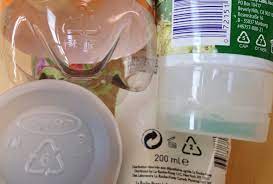Bisphenol A, or BPA, is a term that has grabbed headlines over the past few years. Used in everything from plastic water bottles to the linings of canned foods, this chemical compound has been linked to a range of potential health issues.
But how does BPA move from these products into our bodies and the environment? And how harmful is this process?
How Does Bpa Leach out of Plastic?
When we talk about BPA leaching out of plastic, what we’re really discussing is a process that happens on a microscopic level. This isn’t some big, dramatic event, but it’s just as impactful.
BPA, short for Bisphenol A, is an organic synthetic compound that’s used in creating certain plastics and resins.
You’ll find it in a wide range of products, from water bottles to the lining of canned foods. Now, under normal circumstances, BPA is locked in these materials, a part of the structure that gives plastics their strength and durability.
However, under certain conditions, BPA can start to break free from its plastic prison.
This is what we call ¡®leaching’. Heat is a major culprit in this process. So, when you leave that plastic water bottle in your car on a sunny day, or when you reheat your leftovers in a plastic container, the increased temperature can cause BPA molecules to detach from the plastic and mix with the liquid inside.
Acidity is another factor that can speed up the leaching process. So if you’ve got something acidic in a container that contains BPA, like say, tomato sauce in a can, the BPA can leach out and into the sauce.
Let’s also not forget about wear and tear. The more a plastic item is used and washed, the more likely it is that BPA will start to leach out. This is why reusing plastics is not always a good idea.
Now, you might be thinking, ¡°But it’s just a little bit, right?¡± True, the amounts of BPA that leach out are typically quite small. But even small amounts can accumulate over time, and this is where concerns about health effects come into play.
In the next section, we’ll look at how to tell when a plastic container contains BPA. But for now, the key takeaway is this: BPA leaching is a process driven by heat, acidity, and repeated use. And it’s through this process that BPA can move from your plastic products into your body.
How to tell when a Plastic Container Contains BPA
So, how do you know if a plastic product contains BPA? It’s one we get asked often. Here are a few tips to help you navigate this:
Let’s begin by talking about recycling codes.

